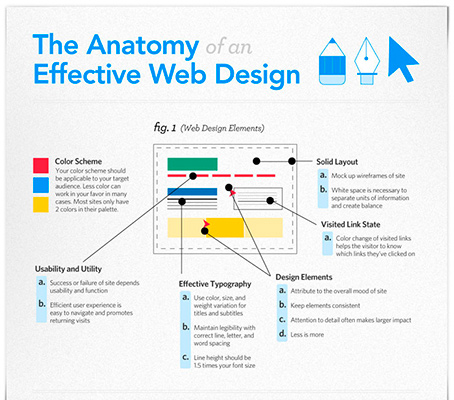Fascinated In Finding Out Just How Site Design Has Advanced? Check Out The Journey From Straightforward Styles To User-Centric Methods
Fascinated In Finding Out Just How Site Design Has Advanced? Check Out The Journey From Straightforward Styles To User-Centric Methods
Blog Article
Article By-Collier Cantu
In the past, web sites were straightforward and concentrated on details. Navigating was straight, and design was for desktops. Now, individual experience is essential. Information overviews designs for easy navigating. Receptive designs match various tools. Today, dark setting lowers pressure, and minimal food selections boost navigating. Interactive functions involve users, and vibrant visuals attract attention. AI combination increases involvement. See exactly how design has actually advanced to enhance your online trip.
Very Early Days of Web Design
In the very early days of website design, simplicity preponderated. Web sites were basic, with restricted shades, font styles, and formats. The emphasis got on supplying information instead of showy visuals. Individuals accessed the net via slow dial-up links, so speed and performance were essential.
Navigation food selections were straightforward, typically located on top or side of the web page. Sites were developed for home computer, as mobile browsing had not been yet common. Material was king, and designers prioritized easy readability over complicated style elements.
HTML was the primary coding language used, and developers had to work within its constraints. Animations and interactive features were very little contrasted to today's standards. Websites were static, with little vibrant content or customized user experiences.
Increase of User-Focused Style
With the advancement of website layout, a shift towards user-focused design principles has ended up being progressively prominent. Today, producing sites that prioritize customer experience is critical for involving site visitors and attaining service goals. https://hbr.org/sponsored/2022/06/adapt-your-digital-marketing-strategy-to-post-pandemic-consumer-behaviors -focused layout entails comprehending the demands, preferences, and habits of your target audience to tailor the site's design, web content, and features accordingly.
Developers now conduct thorough research study, such as user surveys and usability testing, to gather understandings and comments straight from users. This data-driven approach assists in developing instinctive navigation, clear calls-to-action, and aesthetically enticing interfaces that resonate with site visitors. By placing website ada compliance requirements at the facility of the design process, internet sites can deliver an extra personalized and pleasurable experience.
Receptive design has additionally become a crucial element of user-focused layout, making certain that web sites are enhanced for different devices and display sizes. This flexibility boosts availability and usability, satisfying the varied means individuals connect with websites today. Essentially, the rise of user-focused design symbolizes a change towards developing digital experiences that focus on the demands and assumptions of completion customer.
Modern Trends in Web Design
Explore the most up to date fads shaping website design today. One famous fad is dark setting design, using a sleek and modern-day appearance while minimizing eye strain in low-light atmospheres. One more key pattern is minimal navigating, simplifying food selections and boosting individual experience by concentrating on essential elements. Including micro-interactions, such as computer animated buttons or scrolling results, can create a more interesting and interactive internet site. Receptive style stays critical, making certain smooth customer experiences throughout different devices. Additionally, making use of bold typography and unbalanced formats can add visual interest and draw attention to particular content.
Integrating AI innovation, like chatbots for customer assistance or tailored referrals, improves customer interaction and streamlines procedures. Access has also become a substantial trend, with developers focusing on comprehensive layout techniques to deal with diverse customer needs. Embracing sustainability by optimizing web site performance for speed and efficiency is an additional arising pattern in web design. Teaming up with customer feedback and information analytics to iterate and boost design constantly is necessary for remaining pertinent in the ever-evolving digital landscape. By accepting these modern-day trends, you can create a visually appealing, user-friendly site that resonates with your target market.
Final thought
As you reflect on the advancement of internet site layout from the very early days to currently, you can see just how user-focused layout has come to be the driving pressure behind modern-day patterns.
Welcome the journey of modification and adaptation in website design, always keeping the user experience at the forefront.
Stay current with the most recent patterns and innovations, and never stop advancing your strategy to create aesthetically sensational and user-friendly websites.
Progress, adapt, and produce - the future of web design remains in your hands.
